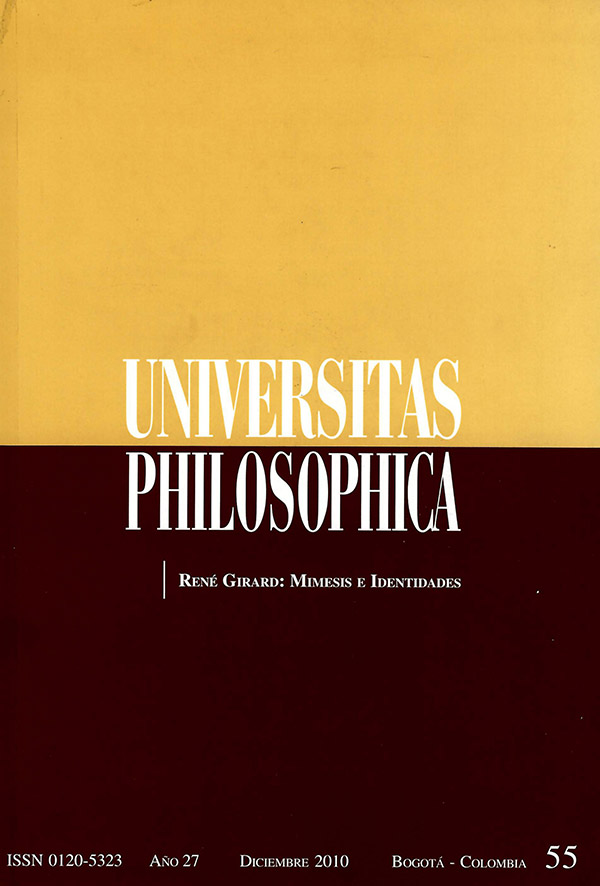Resumen
La filosofía de Girard se basa en la hipótesis del deseo mimético. Los hombres se imitan no sólo en sus comportamientos sino también en sus deseos. Todo objeto de deseo nos es señalado como deseable por un modelo que lo desea. Según la interpretación tradicional, esta teoría supone una pérdida total de nuestra identidad dentro de un proceso imitativo que nos aleja de lo que somos realmente. Con la ayuda de Spinoza, y mediante la construcción del concepto de “razón mimética”, mostramos aquí cómo Girard construye en realidad una concepción del mimetismo que no se opone a nuestra identidad sino que la determina como fractura, localizándola entre una ipseidad diferenciadora y una mismidad mimética. Esto nos permite pensar la complejidad que yace dentro de los procesos de diferenciación y de identificación, abriendo la posibilidad de una identidad pensada como estructura cuyo centro es el margen, y cuyo propio es lo ajeno.
Esta revista científica se encuentra registrada bajo la licencia Creative Commons Reconocimiento 4.0 Internacional. Por lo tanto, esta obra se puede reproducir, distribuir y comunicar públicamente en formato digital, siempre que se reconozca el nombre de los autores y a la Pontificia Universidad Javeriana. Se permite citar, adaptar, transformar, autoarchivar, republicar y crear a partir del material, para cualquier finalidad (incluso comercial), siempre que se reconozca adecuadamente la autoría, se proporcione un enlace a la obra original y se indique si se han realizado cambios. La Pontificia Universidad Javeriana no retiene los derechos sobre las obras publicadas y los contenidos son responsabilidad exclusiva de los autores, quienes conservan sus derechos morales, intelectuales, de privacidad y publicidad.
El aval sobre la intervención de la obra (revisión, corrección de estilo, traducción, diagramación) y su posterior divulgación se otorga mediante una licencia de uso y no a través de una cesión de derechos, lo que representa que la revista y la Pontificia Universidad Javeriana se eximen de cualquier responsabilidad que se pueda derivar de una mala práctica ética por parte de los autores. En consecuencia de la protección brindada por la licencia de uso, la revista no se encuentra en la obligación de publicar retractaciones o modificar la información ya publicada, a no ser que la errata surja del proceso de gestión editorial. La publicación de contenidos en esta revista no representa regalías para los contribuyentes.


